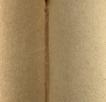200 DOGS AND ALL ABOUT THEM
white was becoming frequent, and was much admired. A strain of pure white was bred by James Hinks, a well-known dog-dealer of Birmingham, and it is no doubt to Hinks that we are indebted for the elegant Bull-terrier of the type that we know to-day. These Birmingham dogs showed a refinement and grace and an absence of the crook-legs and coloured patches which betrayed that Hinks had been using an outcross with the English White Terrier, thus getting away further still from the Bulldog.
With the advent of the Hinks strain in 1862 the short-faced dog fell into disrepute, and pure white became the accepted colour. There was a wide latitude in the matter of weight. If all other points were good, a dog might weigh anything between 1o and 38 lbs., but classes were usually divided for those above and those below 16 lb. The type became fixed, and it was ruled that the perfect Bull-terrier " must have a long head, wide between the ears, level jaws, a small black eye, a large black nose, a long neck, straight fore-legs, a small hare foot, a narrow chest, deep brisket, powerful loin, long body, a tail set and carried low, a fine coat, and small ears well hung and dropping forward."
Idstone, who wrote this description in 1872, earnestly insisted that the ears of all dogs should be left uncut and as Nature made them ; but for twenty years thereafter the ears of the Bull-terrier continued to be cropped to a thin, erect point. The practice of cropping, it is true, was even then illegal and punishable by law, but, although there were occasional convictions under the Cruelty to Animals Act, the dog owners who admired the alertness and perkiness of the cut ear ignored the risk they ran, and it was not until the Kennel Club took resolute action against the practice that cropping was entirely abandoned.
The president of the Kennel Club, Mr. S. E. Shirley, M.P., had himself been a prominent owner and breeder of the Bullterrier. His Nelson, bred by Joe Willock, was celebrated as an excellent example of the small-sized terrier, at a time,
THE BULL-TERRIER 201 however, when there were not a great many competitors of the highest quality. His Dick, also, was a remarkably good dog.
Earlier specimens which have left their names in the history of the breed were Hinks's Old Dutch, who was, perhaps, even a more perfect terrier than the same breeder's Madman and Puss.
Lancashire and Yorkshire have always been noted for good Bull-terriers, and the best of the breed have usually been produced in the neighbourhoods of Leeds, Bradford, Manchester, Bolton, and Liverpool, while Birmingham also shared in the reputation. At one time Londoners gave careful attention to the breed, stimulated thereto by the encouragement of Mr. Shirley and the success of Alfred George.
Of recent years the Bull-terrier has not been a great favourite, and it has sadly deteriorated in type ; but there are signs that the variety is again coming into repute, and within the past two years many admirable specimens-as nearly perfect, perhaps, as many that won honour in former generationshave been brought into prominence. Among dogs, for example, there are Mr. E. T. Pimm's Sweet Lavender, Dr. M. Amsler's MacGregor, Mr. Chris Houlker's His Highness, and Mr. J. Haynes' Bloomsbury Young King. Among bitches there are Mrs. Kipping's Delphinium Wild and Desdemona, Mr. Hornby's Lady Sweetheart, Mr. W. Mayor's Mill Girl, Mr. T. Gannaway's Charlwood Belle, Dr. J. W. Low's Bess of Hardwicke, and Mrs. E. G. Money's Eastbourne Tarqueenia. While these and such as these beautiful and typical terriers are being bred and exhibited there is no cause to fear a further decline in popularity for a variety so eminently engaging.
The club description is as follows General Appearance-The general appearance of the Bull-terrier
is that of a symmetrical animal, the embodiment of agility, grace, elegance, and determination. Head-The head should be long, flat, and wide between the ears, tapering to the nose, without cheek muscles. There should be a slight indentation down the face, without a stop between the eyes. The jaws should be long and very powerful, with a large black nose and open nostrils. Eyes small and very black, almond hape preferred. The lips should meet as tightly as possible, without

